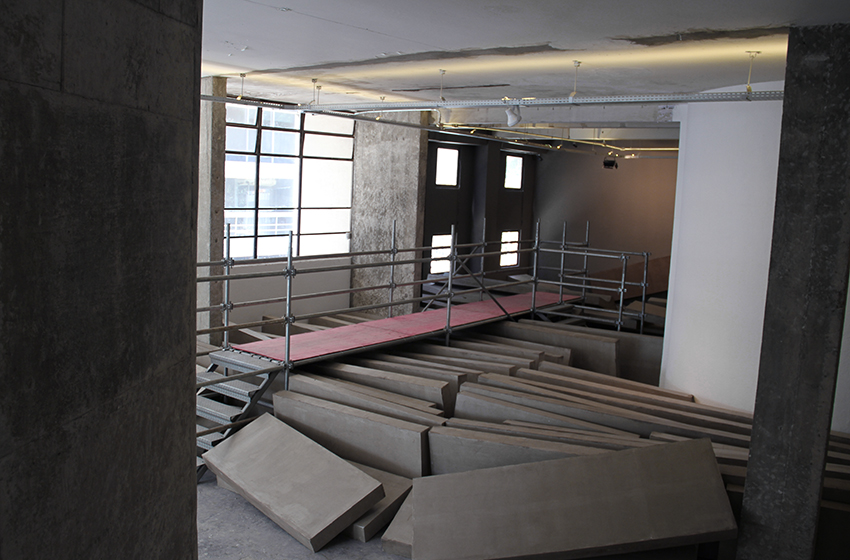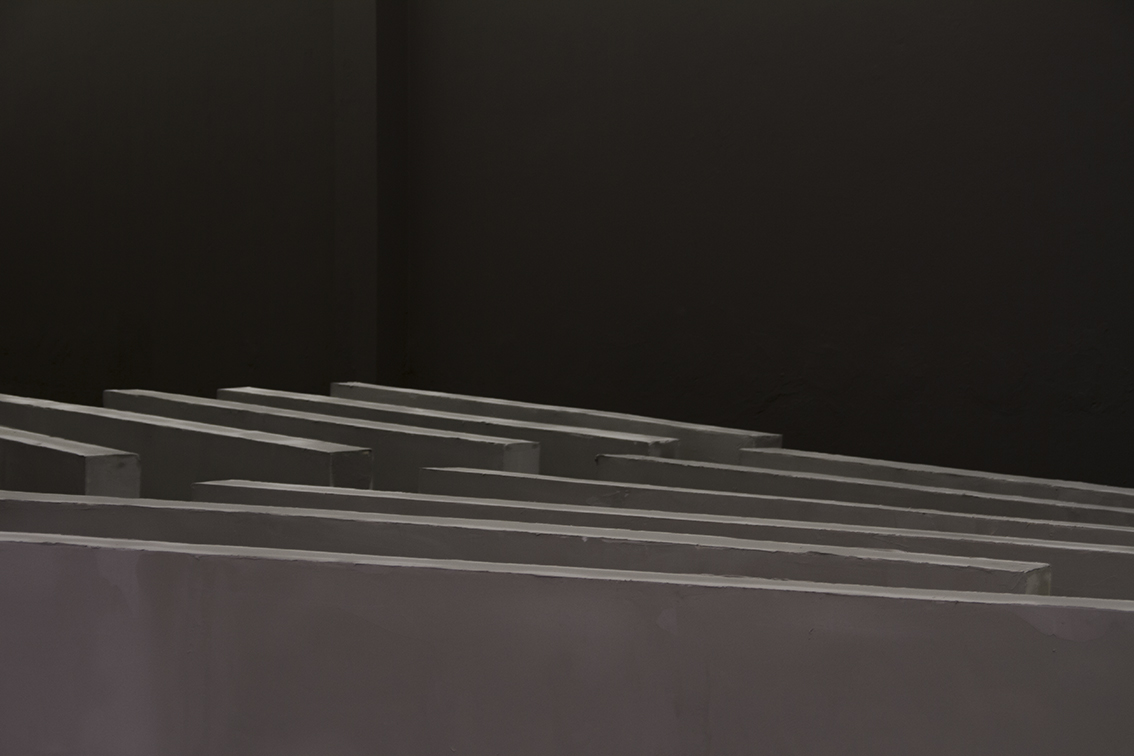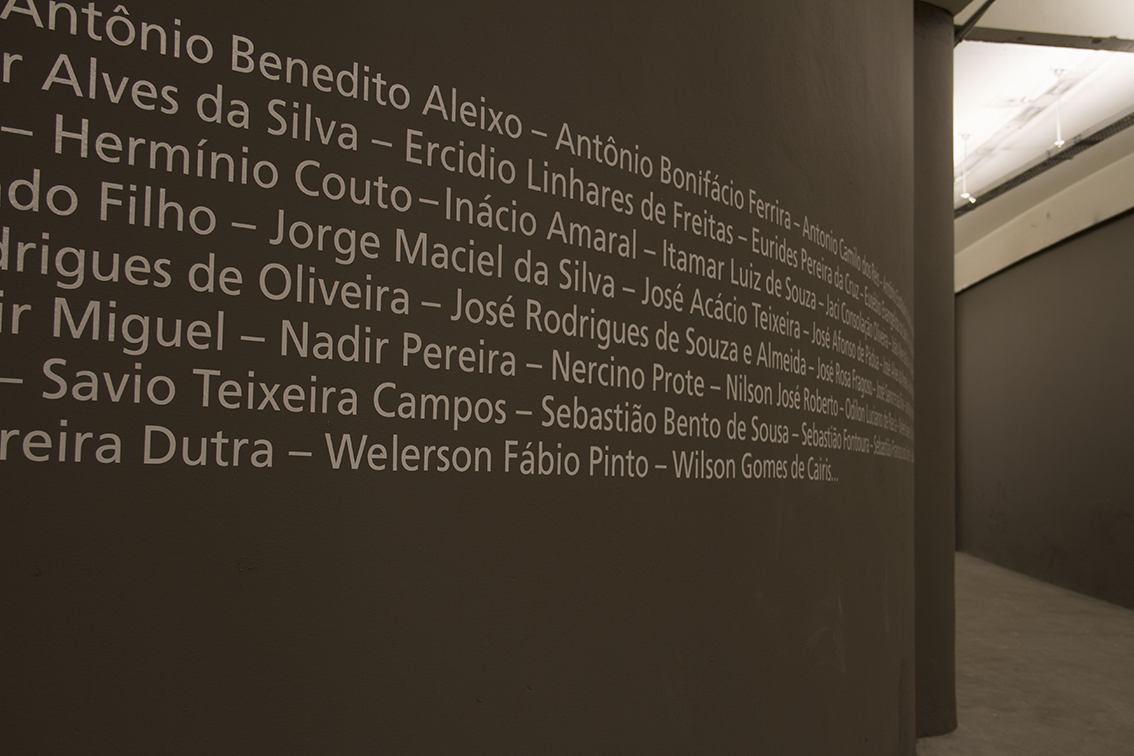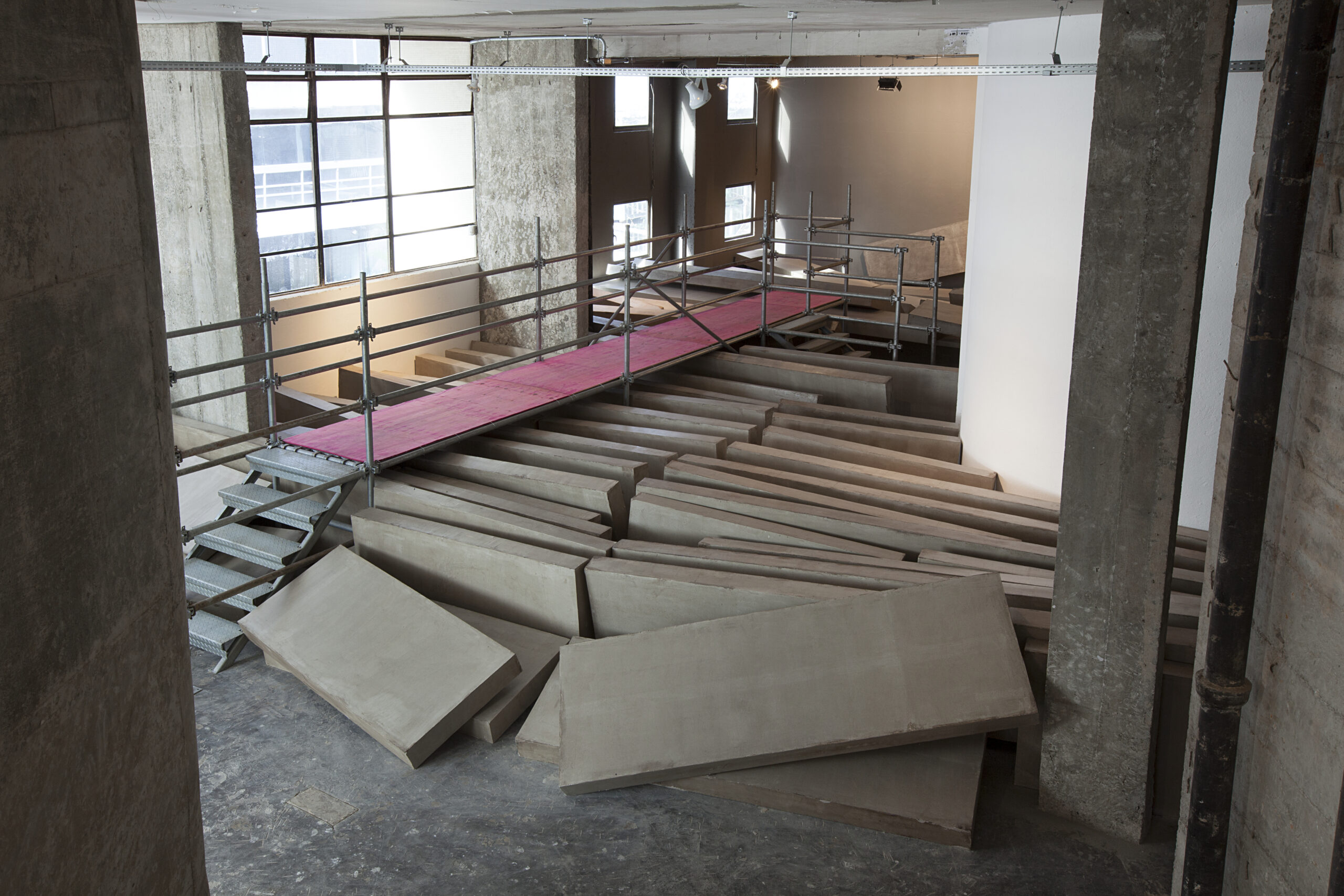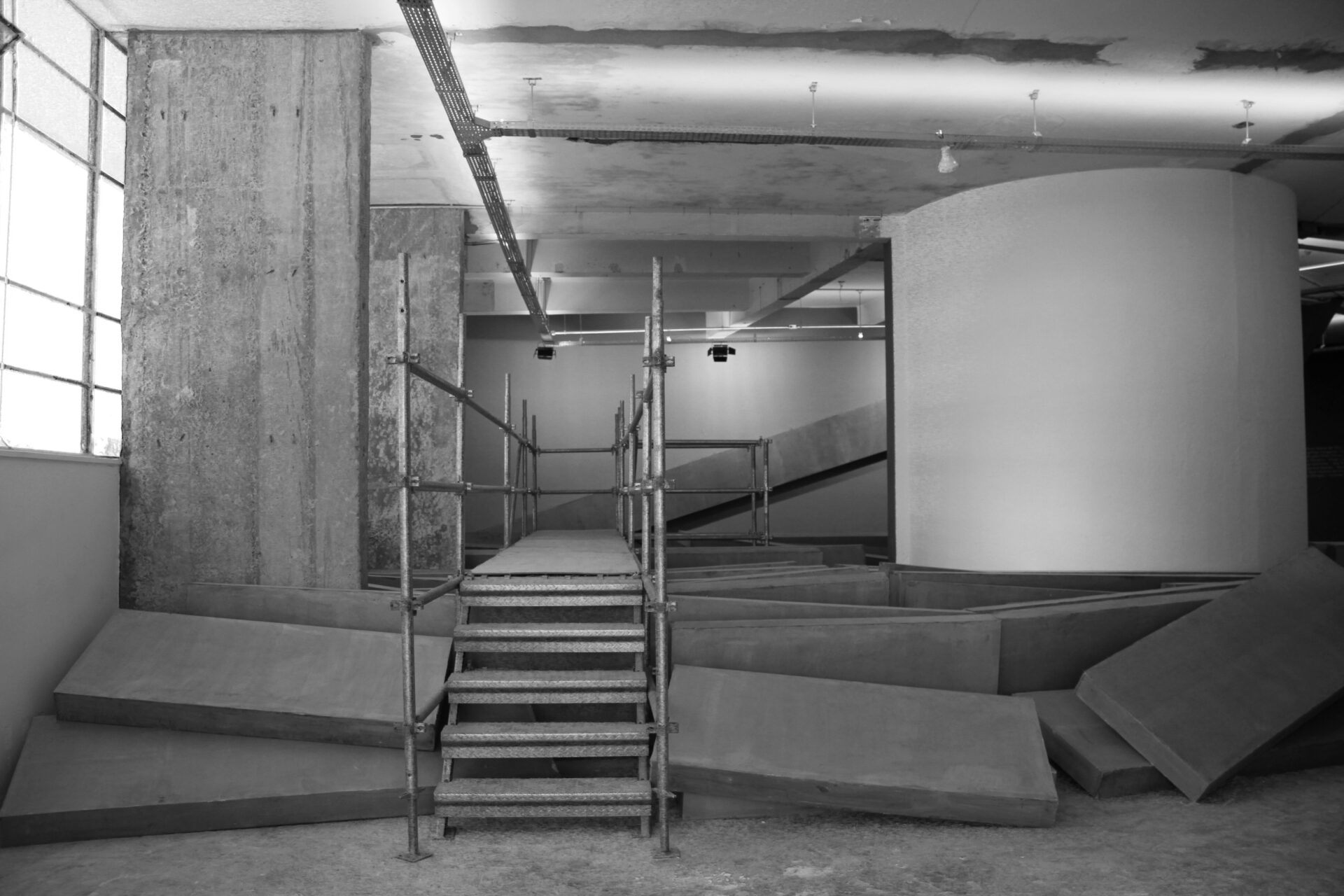
Projeto Gameleira 1971
The exhibition by Lais Myrrha is a ‘project.’ A project associated with a place and a time: Projeto Gameleira 1971. ‘Project’ is word that usually intends to encompass the future, that which is yet to be done, the uncertain developments imagined by those who create. As a architectural project that designs a place for work and cohabitation. As an engineering project that weaves together the exact ways to make the thing a reality. As a project for the execution of such a work, formerly just a dream and measurements. As a political project that associates its physical construction with the consolidation of power of command. As a project to build an Exposition Park designed by Oscar Niemeyer, calculated by Joaquim Cardoso, constructed by companies called Sobraf and Sergen and overseen by a governor named Israel Pinheiro. A project created for the neighborhood of Gameleira in the city of Belo Horizonte, Minas Gerais. A project whose exact beginning is unknown, but which never reached the term as it was thought of. A project that ended abruptly on February 4, 1971 with the collapse of part of the concrete structure that would cover the extensive edifice, instantly killing 61 of the workers who were building it.
The exhibition by Lais Myrrha is a project; but it’s a project in reverse. Though intending to address the future, it does so only by examining a disaster which was gradually and actively erased from the inventory of memories shared by Brazil’s population. A disaster which, spoken of so rarely, may well seem like it never existed to some people. By evoking and investigating the biggest civil accident in the country’s history, Projeto Gameleira 1971 is part of a collective, though scattered effort, which seeks to undo the social amnesia produced, in a variety of contexts, regarding occurrences of undeniable importance. Occurrences which, in most cases, involve the imposition of damages on individuals or groups who do not possess the material and symbolic means to make their losses a public fact. An effort that intends to make the country’s public memory more inclusive and complex, though, in the artist’s case, without any pretensions of constructing a complete, definite narrative. After all, it is part of her craft to excavate new knowledge precisely from ellipses and lapses; in that which is missing or was abandoned for some reason.
It is no coincidence that, in three distinct and articulate pieces, Lais Myrrha presents more clues than clear reports on the occurrence. In the most visible of the three, she has constructed a model of part of the setting in which the disaster took place, created from one of the few known photographs of the partially crumbled building. A structure which recreates, with preciseness and far away from the actual site of the accident, the casual configuration of the fallen beams at Gameleira. A model which is, furthermore, large enough for bodies to physically explore, rather than just peruse with their eyes, allowing the pain which has been reduced to a whimper for over four decades to echo loudly in the actual space. An operation which summons others who are far away to remember what it was, transforming an image of the building in ruins into a monument that exists as long as each of these encounters lasts. In another piece, spectators can read, on the walls’ surfaces, the names of the over 100 construction workers whose bodies were found or who were pronounced missing after 10,000 tons of concrete fell on top of them. An ordered and monotone arrangement of words which designates individual lives and which constitutes, gathered together in this place, a mute representation of the symbolic violence that the act of forgetting engenders. Lastly, the third piece is composed of the image that guided the construction of the model and a text declaring the decision to demolish the entire building soon after the accident, eliminating all traces of the occurrence. A text which also suggests possible reasons for the effort to erase this disaster from the country’s memory, including interconnected motives to protect reputations, cover up negligence and defend political interests contradicted by the failure of the planned construction project.
Still, Lais Myrrha’s project is not concerned with establishing or corroborating blame for the accident. This is not its purpose. The motive here is to register in the nation’s network the forgetting of an event that caused the sudden and violent death of hundreds of workers. A register not produced by verbal announcement, but rather through an invented syntax which seeks to affect the faculty to remember of those who come across the pieces in the exhibition space. A space that is not just anywhere, but the former mezzanine of the Copan, a building which was also designed by architect Oscar Niemeyer and an important part of the imagery of the project for a modern Brazil which has characterized and shaped the country’s culture for decades. An imagery which instituted an almost blind trust in a singular and utopian future, one which we now know will never come. An imagery that nevertheless continues to inform initiatives of various natures though bereft of the generosity that it possessed in its origin. In this context, what the artist has done is affirm the need to promote the meeting between hard concrete and human flesh, which is ruptured in this harsh contact. A meeting between a constructive reasoning whose ambition is to repair or reinvent the world and the absolute misery that this reasoning sometimes produces. Only in this way will it no longer be necessary or possible to forget what happened in Gameleira in 1971. Only in this way will it be possible, in the future, to remember much of what is going on in the country right now.
Moacir dos Anjos

 Português
Português